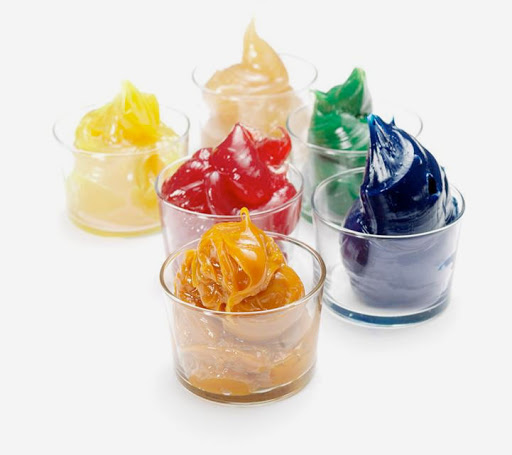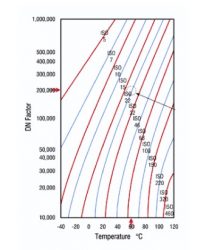Selecting a grease or lubricant is one of the most crucial decisions you make in regards to any machine. Your selection might make the difference between cost savings, reduced downtime, or significant unexpected costs and failures. For oil lubricants, many OEMs specify what product or what type of product is recommended for each component of their equipment. This simplifies the selection process. However, OEM grease specifications are much broader. Most of the time OEMs simply recommend the National Lubrication Grease Institute (NLGI) specification.
This presents both flexibility and options, but also introduces more room erroneous decision-making and poor lubrication. Simply using the NLGI grade is not enough. You have to look at other factors to ensure you grease and machine work properly and does not fail. We will look at some key factors that every operator needs to consider.
Base Oil Viscosity
A grease is composed of 3 ingredients: thickener, oil, and additives. The NLGI number indicates the thickness of the thickener, but does not specify the viscosity of the thickened base oil. The underlying base oil has its own viscosity just like any lubrication oil. If a piece of a equipment calls for a certain lubricating oil with a specific viscosity, it is easy to find a grease that has the same base oil viscosity and similar additive package.
If viscosity requirements are not specified, you can use the chart below (courtesy of ExxonMobil and Noria).
The two factors required are operating temperature and DN or NDm, which are the bearing speed factors. To calculate those speed factors, simply use the following formula:
- DN = (rpm)*(bearing bore) and
- NDm = (rpm)*((bearing bore + outside diameter) / 2)
The intersection of DN and Temperature will point you towards the required ISO viscosity. This chart assumes viscosity index.
Base Oil Type and Additives
Once a viscosity is identified, you need to figure out what additives and base oil you need. Similar to oil lubricants you must assess your operations and figure what additives are necessary or unnecessary. For example, light loads and high-speed applications do not require a grease with extreme pressure (EP) additives, but a heavily loaded application will need those EP additives. The chart below breaks down the needed additives for various bearings.

Most greases use mineral oil and only require mineral oil. However, synthetic base oils are recommended for certain extreme temperature applications. Applications with low or high operating temperatures or a wide range of temperatures, a synthetic base oil is recommended. Synthetic base oil greases are also recommended for users who want to longer regreasing intervals.
Grease Thickener
Unlike lubricating oils, greases include thickeners. The two factors that distinguish grease are type and consistency. As mentioned earlier, consistency is based on the NLGI scale. The scale ranges from 000 (most fluid) to 6 (least fluid). The most common and most recommended NLGI grade is #2. Most OEMs specify the NLGI grade and matching that number is a simple process (especially if you require a NLGI 2 grease).
The other factor for thickeners is the type of thickener. The differences between each type of thickener are present pros and cons for each application. The most common types are lithium soap, lithium complex, and polyurea. Lithium soap greases are low-cost general-purpose grease and perform well in general applications. Lithium complex is similar to lithium soap, but is preferred for applications with higher operating temperatures. Polyurea greases have good high-temperature properties and have high oxidation stability and bleed resistance. When switching greases, it is important to understand thickener compatibility to make sure the new grease does not fail.
Cost and Other Considerations
When purchasing a grease, a basic lithium grease will be cheaper than a sophisticated polyurea grease. It is up to you to determine the tradeoffs between grease costs and performance gains/losses. Purchasing a higher quality grease may lead to longer regreasing intervals and less machine failure.
To save costs, consolidating greases may be wise, but be wary of over-consolidation. This may result in some machines not using an appropriate grease.
Other attributes should be considered depending on the application. Some grease exclusive attributes include:
- Drop Point
- Mechanical Stability
- Water Washout
- Bleed Characteristics
- Pumpability
Certain attributes are focused specifically on heavy loads and should be considered for heavy load-low speed applications. These include:
- Four-Ball Tests
- Timken OK Load
Additionally, industry specific requirements will also dictate grease selection. These industries have strict requirements and require greases to be certified by certain 3rd-party regulators:
- Food and Beverage
- Military and Defense
- Aerospace
Conclusion
Unlike oils, greases have many more factors for product selection. These factors should be considered for each application as each grease is designed and manufacturer specifically for each application and have a delicate balance of thickener, oil, and additives.
Twin Specialties carries a wide variety of greases to meet you application needs. We work directly with you to make sure we provide the right product that delivers performance while being mindful of the total cost of grease and maintenance. Contact Twin Specialties to learn more about our grease product lines.


